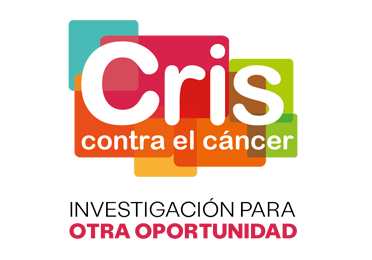
Co-presided by Enriqueta Felip, Principal Investigator of VHIO’s Thoracic Tumors, the 2019 premier global stage for the first outing of translational science and clinical data against lung cancer- the International Association for the Study of Lung Cancer’s (IASLC) World Conference on Lung Cancer – drew a record attendance of more than 7,500 expert researchers, clinical investigators, and oncology professionals implicated in the multidisciplinary management and treatment of lung cancer and thoracic tumors.
From 07–10 September, expert speakers and participants spanning over 100 countries convened in Barcelona for the exchange and debate of the very latest advances within the field across a broad range of especially crafted sessions including ground-breaking plenaries, expert lectures, late-breakers, selected orals and posters, interactive breakfast sessions, and hands-on workshops.
Taking place at the Fira de Barcelona Congress Center, and championed by Enriqueta Felip alongside the other two Barcelona-based Conference Co-Presidents, Ramon Rami-Porta, Clinical Chief of Thoracic Surgery, Hospital Universitari Mútua Terrassa, and Antoni Rosell, Clinical Director of Pulmonology & Thoracic Surgery at the Hospital Universitari Germans Trias I Pujol, over 2000 presentations showcased during the 17 dedicated specialized tracks, including some that counted on the expertise of VHIO faculty either as first, senior, or co-authors.
 To name but one, Enriqueta Felip, also Chief of the Thoracic Cancer Unit at the Medical Oncology Department of the Vall d´Hebron University Hospital (HUVH) and Board Member, presented on the Epidemiology and Clinical Characteristics of Lung Cancer in Women during a Plenary Session on non-small cell lung cancer (NSCLC) – a tumor type that accounts for between 80-90% of all lung cancer diagnoses, with an estimated 725,352 new cases in 2018.
To name but one, Enriqueta Felip, also Chief of the Thoracic Cancer Unit at the Medical Oncology Department of the Vall d´Hebron University Hospital (HUVH) and Board Member, presented on the Epidemiology and Clinical Characteristics of Lung Cancer in Women during a Plenary Session on non-small cell lung cancer (NSCLC) – a tumor type that accounts for between 80-90% of all lung cancer diagnoses, with an estimated 725,352 new cases in 2018.
With lung cancer now positioned as the second leading cause of cancer-related deaths in women at global level, the soaring incidence of this disease in this population is naturally at the forefront of epidemiological research. While these alarming trends can largely be explained by a shift in social norms, with many more female smokers over the last few decades as a major contributing factor, statistics also point to an increase in lung cancer cases among female non-smokers.
As an example, in the US, while the incidence of lung cancer in young women is higher than in young men, the figures cannot be fully explained by differences in smoking patterns between the two sexes.
Commenting for VHIO Communications, Enriqueta Felip observed, “Increased focus on studies exploring lung cancer epidemiology will not only help us to more precisely identify events governing the incidence of lung cancer in specific populations, but also play a pivotal role in developing strategies aimed at prevention, early diagnosis, as well as pinpointing risk factors implicated in the aetiology of disease in non-smokers.”
A second VHIO-led study presented during a Poster Session entitled Treatment in the Real World – Support, Survivorship, Systems Research, revealed results on the Incidence and Outcome of Multiple Primary Cancers in a Series of Lung Cancer Patients.
The study analysed 1,386 lung cancer patients from October 2017 – August 2018. Confirming a prior series, a second primary tumor occurred in 206 patients (15%) and a third in 41 (3%). Those patients with multiple primary tumors were mostly men (67%), smokers (88%), statin-users (40%), and had a family history of this disease (28%). These second tumors were diagnosed in 62% of cases in routine check-ups, and 27% were symptomatic patients.
The most common primary tumor type was lung cancer (34%), followed by breast cancer (16%), colorectal tumours (15%), prostate cancer (9%), bladder cancer (8%) and head and neck cancer (6%). “The frequency of second primary neoplasms among patients with lung cancer is 15%. Considering this important statistic, and given that many patients are treated with curative intent, we must centre our efforts on maximizing surveillance strategies,” explained Susana Cedrés, Medical Oncologist and Clinical Investigator of VHIO’s Thoracic Tumors Group, and first author of the study.
The emergence of a second primary tumor may be due to several factors including previous cancer treatments, genetic susceptibility, lifestyle, as well as exposure to environmental ‘influencers’. “Only by studying these cancer drivers in greater depth, as well as those genetic variants that increase the risk of disease occurrence, will we be able to more effectively define high-risk groups and develop more robust clinical strategies aimed at prevention and intervention,” concluded Susana.
Among the many stand-out studies during the Congress, several evidenced exciting promise and improved efficacy of novel targeted therapies, including CART T-cell therapeutics. Others exemplified progress being made in empowering immunotherapeutics in combination, as well as better understanding the cellular and molecular mechanisms modulating immune response.
Reflecting on just some of the many pioneering studies presented Enriqueta observed, “Much of the research presented at this Congress represents important next steps towards more rapidly translating today’s discovery into better prevention, diagnosis, staging and treatment of thoracic malignancies.”
“More specifically, we have seen great promise for the treatment of patients with small cell lung cancer, new therapeutic avenues for a molecular subgroup of RET+ lung cancer, potential novel approaches for patients with KRAS mutations, and long term survival outcomes of an immune-based clinical trial for the treatment of advanced disease,” she concluded.
To discover so much more about this must-attend, annual gathering of multidisciplinary thought leaders and trailblazers in thoracic oncology worldwide please visit: https://wclc2019.iaslc.org/.
###








